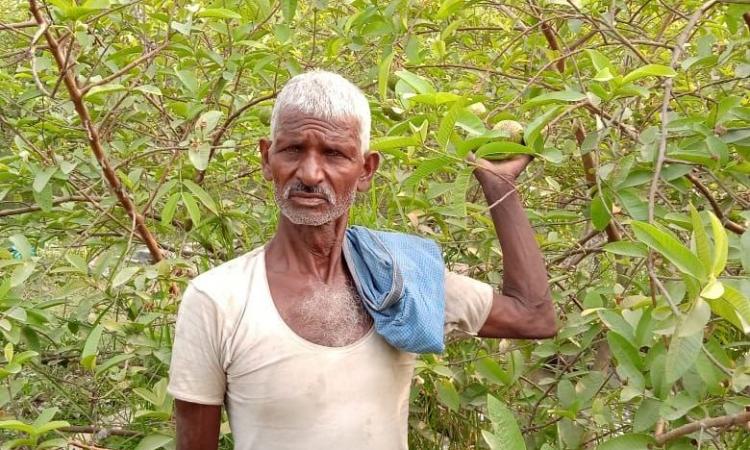
Successful experiments in farming have benefited the farmers across the world. Harinath Shah, a resident of Dharphari village in Paroo block in Muzaffarpur district in Bihar, has done one such experiment by introducing the cultivation of guava on sandy sand in his village. After working as a labourer in Kolkata for several years, he had to return to Bihar after the demise of his wife in 1990.
As a twenty-five-year-old single parent, he took the entire responsibility of his four children and started working as a daily wage labourer in Bihar. Unable to make the ends meet, in 2014, while looking for an alternate livelihood, he thought of breaking the traditional pattern of growing watermelon, muskmelon & vegetables and started growing guava on the sandy land instead.
Ever since, several farmers in his village have followed the suit. Harinath found a new way of self-reliance by cultivating guava on sand, which was earlier unknown to the area.
The onset of Harinath’s journey
Harinath’s journey began when his brother-in-law advised him to adopt guava cultivation to improve his financial conditions and provided more information and acquainted him with the improved variety of guava and taught him the method of cultivation.
Acting on his friend’s advice, Harinath started the cultivation by taking land on lease for fifteen years. He had to enter into lease agreements with several farmers to lease the land. Every year, he also gave 10 kg of grain per katha along with 10 kg of guava to the landowner as payment. Over the years, he planted a total of 560 guava saplings on a total of 57 kathas, which is about two and a half hectares of land.
The process of cultivation
Harinath said, "Samplings should be planted at least 12 to 15 feet from one another. This can be quite strenuous as a labourer takes a complete day to plant only 20 saplings. Fertilizers, organic manures, chemical fertilizers, and medicines have to be given to each plant at the time of planting. Apart from this, it is necessary to give 200 gm of D.A.P., 200 gm of urea, 500 gm of organic manure, 50 gm of potassium manure, and 10 gm of thimet to each plant."
At first, after planting for a year, about 4 to 5 fruits can be harvested from a guava plant. In this way, 280 kg of guava fruit is produced from a whole plantation. Gradually, the number of fruits per tree starts increasing and reaches up to 25 to 50 fruits. "Guava is sold at Rs 25 to 30 per kg in the local market and so far, I have invested a total of Rs 45,146 to plant 560 saplings," Harinath further informed.
Reaping profits
Due to increased production, he was able to get the invested money back in the first two years, and profits started pouring in from the fourth to fifth years. Today, he earns around a lakh per year through guava cultivation and is taking care of the entire family.
He is paying for the education and daily needs of his children and grandchildren. "If only I had started this cultivation earlier, I would have been able to provide a good education to my three elder sons as well," expressed Harinath.
According to Devesh Chandra, the former District Councillor of Muzaffarpur, Harinath has become a role model for the farmers. He mentioned how Guava is primarily grown and traded in Muzaffarpur's Paroo block and the neighbouring Vaishali district.
He firmly believes if the Agriculture Department will provide technical training to grow guava, bank loans, and government benefits to the farmers in the western Diara region of the district, the farmers in this region will also prosper.
Speaking on the assistance provided by the government, Guru Charan Chaudhary, Agriculture Officer, Department of Agriculture, Paroo Block, explained that those farmers who cultivate any kind of fruit on their own or on a leased land, have to first register on the government's website.
Following an investigation, the department provides them with at least half of the cost of the land. At the same time, there is a provision for a 100 percent government subsidy on fruit plants.
To complete the application process, the farmers have to submit the original land papers, revenue receipt, rent receipt, bank passbook, and photocopy of the Aadhar card along with four passport-size photographs to the department.
These provisions will indeed leverage capacity and reduce liabilities for farmers like Harinath who are taking risks and introducing non-traditional crops into their farming operations. However, for farmers like him to be aware and make use of the available schemes, there should be effective dissemination of information at every level.
Phooldeo is a rural writer from Bihar. Share your feedback on features@charkha.org
Charkha Features
/articles/man-behind-introducing-guava-cultivation-paroo-bihar